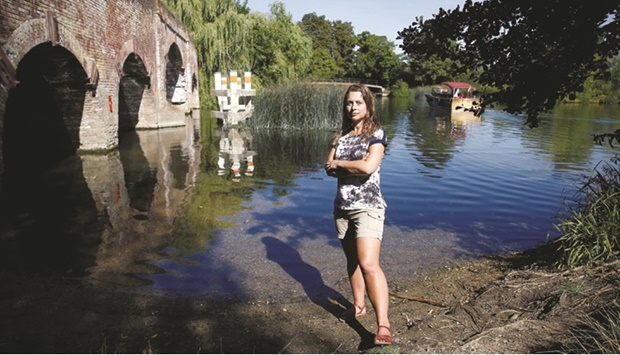The source of the River Thames has dried up further downstream than ever before, as England looks set to enter a drought that some experts say the country is unprepared for.
Britain’s Met Office said that this July was the driest for England since 1935 with average rainfall, at 23.1mm (0.9”), just 35% of the average for the month.
Some parts of the country saw the driest July ever.
The River Thames stretches 215 miles (356km) across southern England, from Gloucestershire in the west through the heart of London, before entering the sea at Essex to the east.
The natural spring that supplies the river, known as the source, dries up most summers.
However, this year the dry riverbed reaches significantly further downstream than in previous years, according to observations by conservation experts.
“The Thames would normally be at its source – and there’s a nice pub next to it – would be about 15km back upstream,” Alisdair Naulls, an engagement officer at the Rivers Trust, told Reuters while standing in a small section of the Thames in Cricklade, about 80km west of London.
“It’s very, very shallow here ... but you don’t have to go much further up this little bit of the Thames to find yourself stood on dry ground,” he said. “And really, that is ground that should still be wet and should always be wet.”
Naulls said the shallow, warmer water contained less oxygen, which fish and other wildlife needed to thrive.
The Thames Head Inn lies upstream, a few steps from a stone that marks the source of the river in Gloucestershire.
Its manager, 31-year-old David McMeeking, said he is concerned about the effects of climate change on the pub’s namesake.
“It is still the official source of the Thames, so the stone will always be there, but whether or not the water comes through is another issue,” said McMeeking.
Unprecedented heat and a lack of rainfall has pushed two water companies in the country’s south to announce temporary bans on the use of hosepipes and sprinkler systems.
Thames Water, which supplies 15mn customers across London and southeast England, has said that it is planning to introduce the similar restrictions.
A four-day “extreme heat” warning came into force in parts of England and Wales on Thursday.
The Met Office issued its first such warning ever last month, when temperatures breached 40° Celsius (104° Fahrenheit) for the first time.
Climate expert and hydrologist at the University of Reading Hannah Cloke said that low rainfall has left river levels and aquifers low, while water has been taken out of the waterways to irrigate crops, top up drinking water and for use in industry.
“If we don’t get rain in August, in fact, if we have a dry winter, then we could be in severe trouble come spring and next summer when we really don’t have any water stores left whatsoever,” she said.
She said that hosepipe restrictions on individuals are useful to help change attitudes to water usage, but investment in infrastructure and policy on preventing further climate change were even more important.

Thames River
